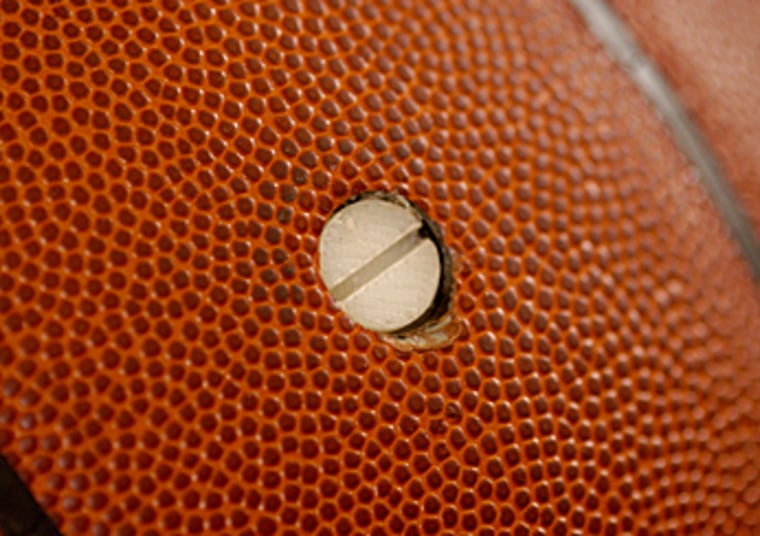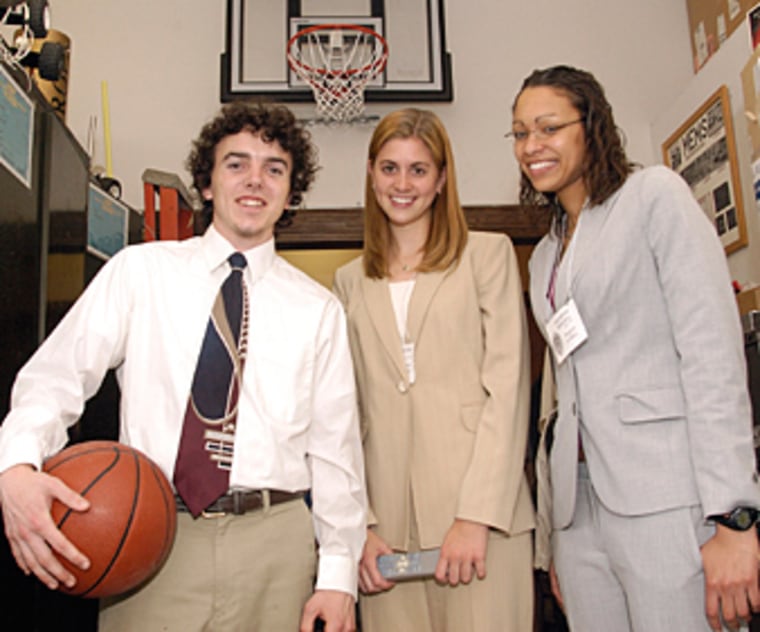A new high-tech system puts sound in a bouncing ball and brings hoop dreams to the blind.
The setup was devised by three Johns Hopkins University engineering undergraduates. Two of them — Alissa Burkholder and Ashanna Randall — are starters on the women's basketball team. Steve Garber, a mechanical engineering major, rounded out the design team.
A sound emitter is strategically placed in the backboard, too.
"There are people all over the country who are waiting for something like this," said Mike Bullis, business services development manager for Blind Industries and Services of Maryland, a group that aids the visually impaired and sponsored the research project. "There are blind athletes who want an audible ball. And there are school-age children who can benefit from the hand coordination that comes from playing ball. Right now, blind kids can play with a ball, but only if someone is there to find it if it rolls away."
Bullis should know. He's blind. He said he can catch passes and sink buckets two out of three times with the adapted system. While those might not have been three-pointers, such a shooting percentage from any spot on the floor would be the envy of many sighted hoopsters.

The backboard sound system uses a large piezoelectric sound emitter, powered by a 9-volt battery, to send pulsing tones out to the court. A tiny sound emitter embedded in the ball is powered by five 3-volt button batteries. The ball emits a continuous, higher tone.
"We discovered that it's really hard to put a device inside a ball in a way that wouldn't change its characteristics," said Randall, the ballplayer. "Weight was a consideration. If the device was too heavy, the ball wouldn't bounce or roll properly."
So they turned to the Spalding Infusion basketball, which is equipped with a airtight cylinder that houses a small pump. Spalding provided five balls that had the cylinder but not the pump. The batteries, sound device and a specially designed mini-speaker were inserted into the cylinder.
The prototype isn't perfect, Bullis said. Some tweaking of the sounds is needed to make them less annoying and more useful. But Bullis plans to pitch the product to sports equipment makers and suggest it also be used for soccer and volleyball.
"I think we'll end up with an audible ball that's going to be a huge asset to the blind community," Bullis said.
